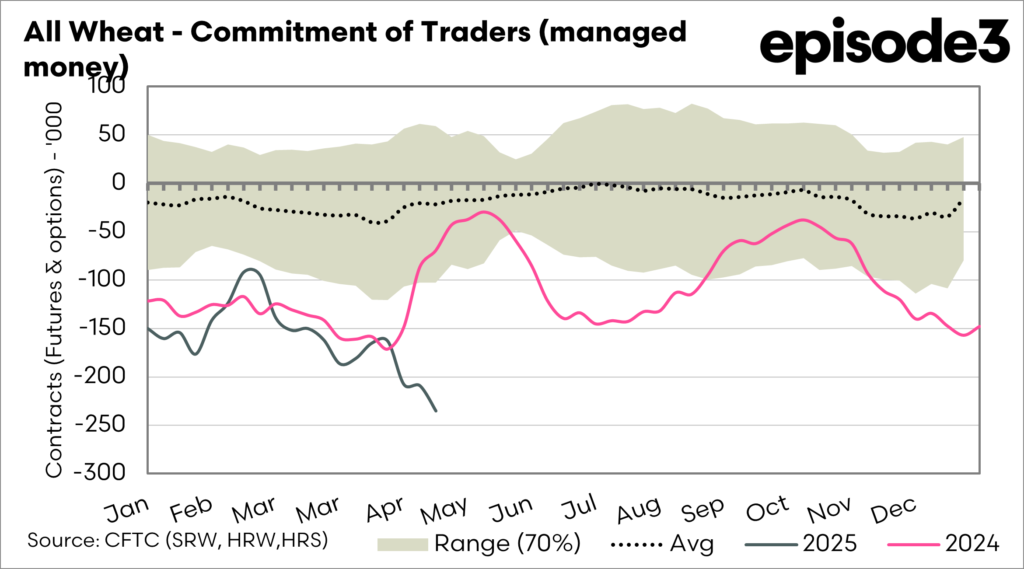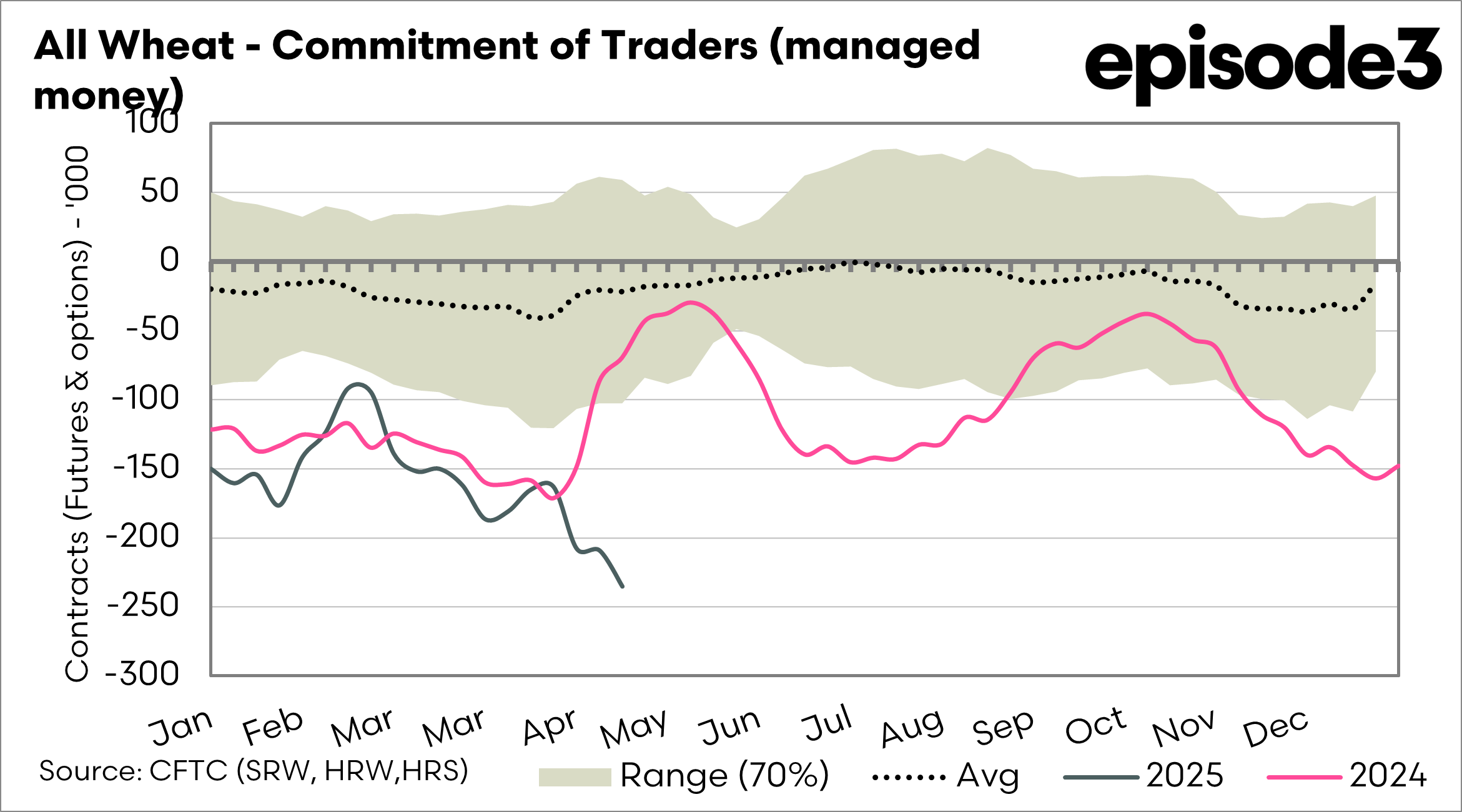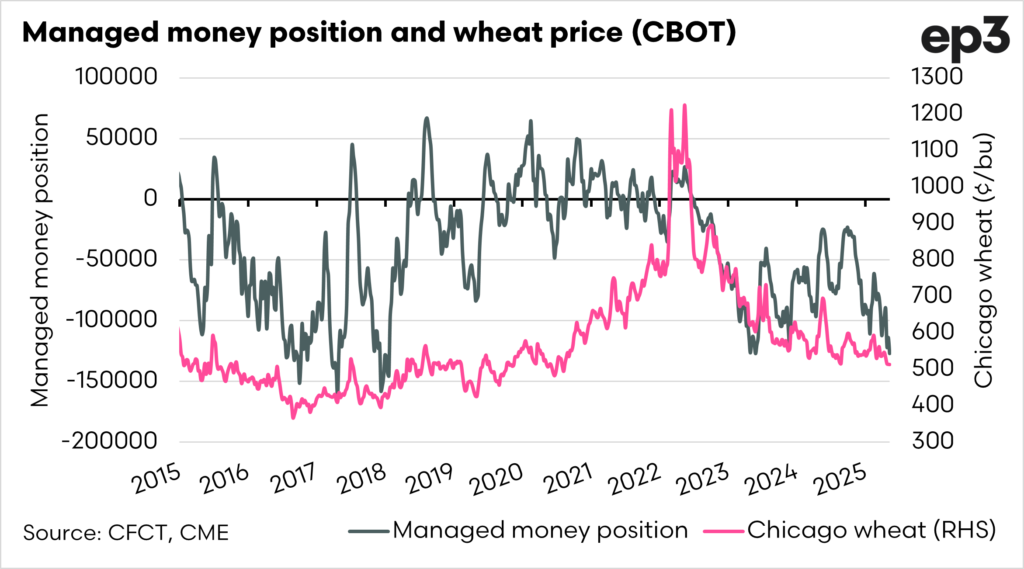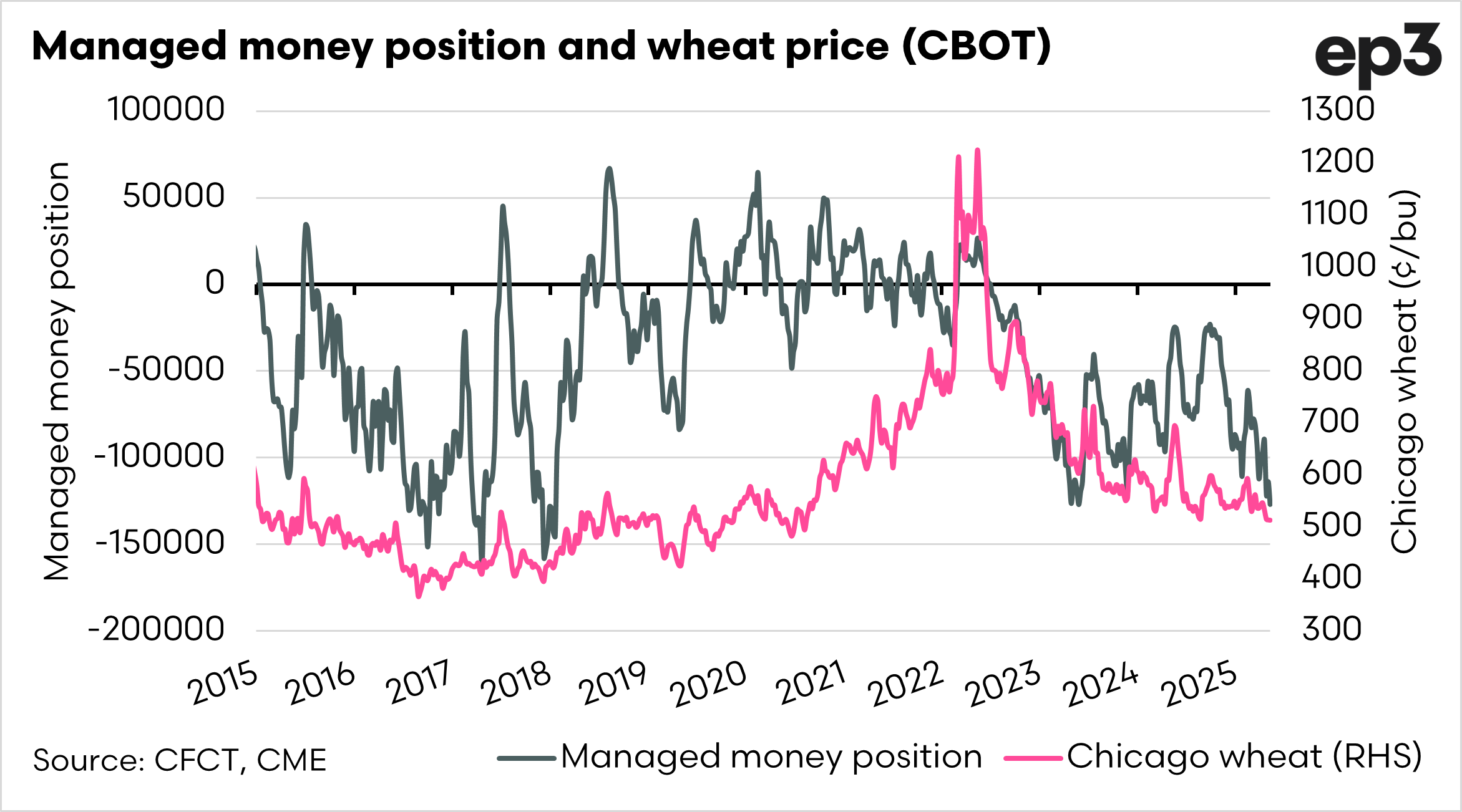Market Morsel: The bets are on wheat falling, but gamblers don’t always win.

Gaining an understanding of how speculators are positioned is valuable, as it provides a market signal and offers insight into market sentiment. The Commodity Futures Trading Commission (CFTC) provides a weekly report called the Commitment of Traders (COT), which provides this insight.
The COT report is released every Friday. The weekly data is the positions held as of Tuesday; therefore, there is a delay.
The full report provides details on the number of contracts held in short (sold) or long (bought) positions for a range of different trader types. The type of trader that we are interested in viewing is the ‘managed money’, which is a proxy for speculators.
When we examine the report, we add the sold and bought positions for futures (and options), to provide a net position. This gives us an indication of the overall market sentiment. When the market has a negative position, speculators are overall bearish on the market, and vice versa when the position is positive.
The first chart below shows the seasonality of the all wheat position (Chicago, Kansas and Minneapolis), it shows that they are betting on the wheat market falling further. That doesn’t mean they are right.
As we have discussed, the middle of the year tends to be the most volatile, when issues can arise in the global crop. If the market starts to recover, whilst these speculators have sold massive numbers of contracts, it can lead to a short covering rally.
A short-covering rally in wheat occurs when speculators who have bet against the price of wheat (by taking short positions) are forced to buy back their contracts as wheat prices rise. This happens when the market moves against their expectations, often due to factors like unexpected weather events, supply disruptions, or bullish news. As speculators rush to cover their short positions, they buy wheat futures, which increases demand and pushes prices even higher. The greater the number of short positions in the market, the more significant the potential for a short-covering rally, as the buying from short-covering adds extra upward pressure on prices.
While the speculators are heavily short in the market, entering the traditionally most volatile period of the year, this could lead to a short-covering rally. Let’s wait and see!
They call it smart money, but it’s is not always right.




